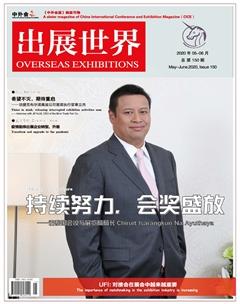The importance of matchmaking in the exhibition industry is increasing
In December 2019, UFI, the Global Association of the Exhibition Industry, released new research: a white paper on the importance of matchmaking in the exhibition industry. Authored by the UFI Marketing Working Group with other industry professionals from around the world, the report provides research, insights and best practice examples to support effective matchmaking activities across the industry globally.
A QUESTION OF MONEY – AND MORE CHALLENGES
The report asked the participants whether customers had to pay for the matchmaking service. The matchmaking is mainly for free (79%), while 21% charge for the service. This marks a slight decrease of 4% compared to 2011, when 25% indicated that their customers had to pay for matchmaking.
All the same, matchmaking faces some challenges. First, it is important that customers are interested in the offering at all, which is not sufficiently the case according to 43% of respondents. The no-show rate of customers is the biggest challenge that has to be overcome –45% of respondents see an issue here. Although still the number one problem in matchmaking, its also the biggest success compared to the last survey, as this number decreased over the period from 70% in 2011.
Another challenge to face is matchmaking the participants incorrectly, which decreased from 38% in 2011 to 32% in 2019. Other challenges might be that the customers interests are difficult to predict or that there is still only a small database available for matchmaking.
HOW DO THE REPORT DO MATCHMAKING?
How matchmaking is incorporated into an exhibition/congress/ conference programme is an interesting question. The majority of the survey participants (76%) integrate matchmaking services into the programme. Only a few host stand-alone matchmaking events (4%) and 20% do both. Matchmaking is primarily seen as part
of another event.
As an example of where or how matchmaking could work at an exhibition or congress, the report asked the participants how important it is to have a business lounge/area available. Over 60% of respondents stated that such places are important or extremely important for them.
Neutral places where people can meet are therefore good for enhancing the possibility of matchmaking. 39% found that such areas are somewhat important or not so important. In the end, whether it is a dedicated room, or only a table with chairs at a designated space on the exhibition grounds – enabling physical meetings
is what matchmaking in our industry is all about.
INTERNAL ORGANISATION
How do the report organise internally to provide a matchmaking service? Most of the participants state that they have a service provider or technology partner that helps them to organize matchmaking. Specifically, 24% have a service provider, 18% a technology partner and 22% have both. Only 35% of the participants organise
matchmaking completely on their own.
Looking at the internal organisation of the matchmaking process, it is interesting to see that over 58% of the participating companies do not have a special team dedicated to matchmaking, whereas 42% do have one. Most of the companies with a matchmaking team answered that only two or the report people from their company are exclusively responsible for matchmaking matters.
Interestingly, whether companies have a team specifically dedicated to matchmaking is not dependent on company size. Smaller and larger companies alike either do or do not have teams dedicated to matchmaking.
CONCLUSION
The survey overall shows that the importance of matchmaking in the exhibition industry is increasing – over 90% already do matchmaking and 71% indicate it as an important or very important part of their event. Matchmaking is an indispensable feature of events and, in most cases, providing a matchmaking possibility
is a key ingredient in creating an attractive programme and therefore a successful event.
Nonetheless, the majority of customers that make use of matchmaking are reportedly satisfied or very satisfied with the service (63%).

